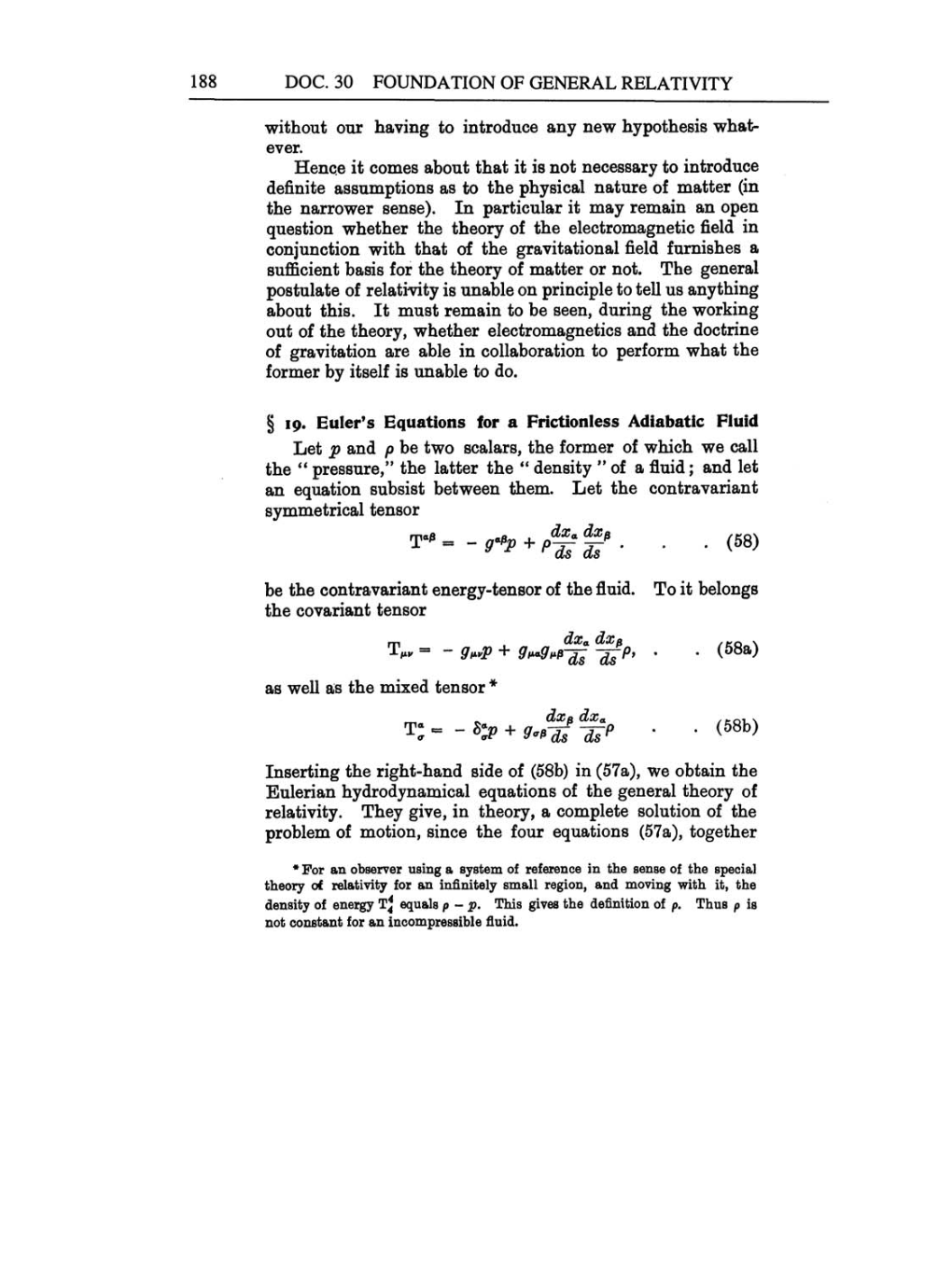188 DOC. 30 FOUNDATION OF GENERAL
RELATIVITY
without
our having
to
introduce
any
new
hypothesis
what-
ever.
Hence it
comes
about that it
is
not
necessary
to
introduce
definite
assumptions
as
to
the
physical
nature of
matter
(in
the
narrower sense).
In
particular
it
may
remain
an open
question
whether the
theory
of
the
electromagnetic
field
in
conjunction
with that
of
the
gravitational
field
furnishes
a
sufficient basis for
the
theory
of
matter
or
not.
The
general
postulate
of
relativity
is
unable
on
principle
to tell
us
anything
about this. It must remain
to be
seen, during
the
working
out of
the
theory,
whether
electromagnetics
and the doctrine
of
gravitation
are
able
in collaboration
to
perform
what
the
former
by
itself
is
unable to
do.
§
19.
Euler's
Equations
for
a
Frictionless Adiabatic Fluid
Let
p
and
p
be
two
scalars,
the former of which
we
call
the
"pressure,"
the latter the
"density"
of
a
fluid;
and let
an
equation
subsist between them. Let the contravariant
symmetrical
tensor
T*
-
-
+
/%
jj?
. .
.
(58)
be
the contravariant
energy-tensor
of
the
fluid.
To
it
belongs
the covariant tensor
rn
dXfL
dx
ß
Tm" =
-
g^vp
+
y^^~cls
~ds^f
* '
(58a)V.
as
well
as
the
mixed tensor*
#\
dx&
dxa
t;
=
-Kv
+
up
•
•
(58b)\
Inserting
the
right-hand
side of
(58b)
in
(57a),
we
obtain the
Eulerian
hydrodynamical equations
of
the
general theory
of
relativity.
They
give,
in
theory,
a
complete
solution
of
the
problem
of
motion,
since
the four
equations
(57a),
together
*For
an
observer
using a system
of
reference in the
sense
of
the
special
theory
of
relativity
for
an infinitely
small
region,
and
moving
with it,
the
density
of
energy
T44
equals
p
-
p.
This
gives
the
definition
of
p.
Thus
p
is
not constant for
an incompressible
fluid.
